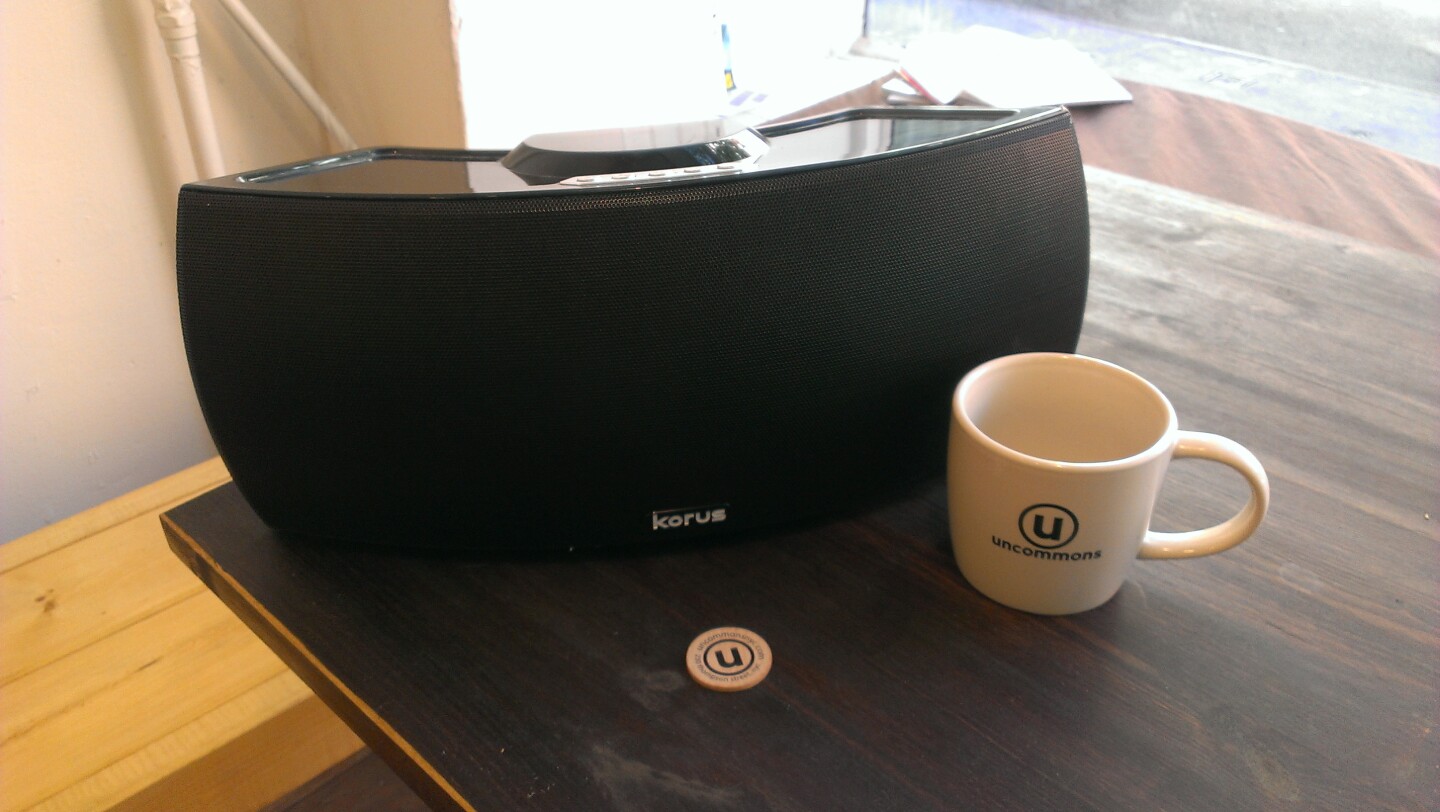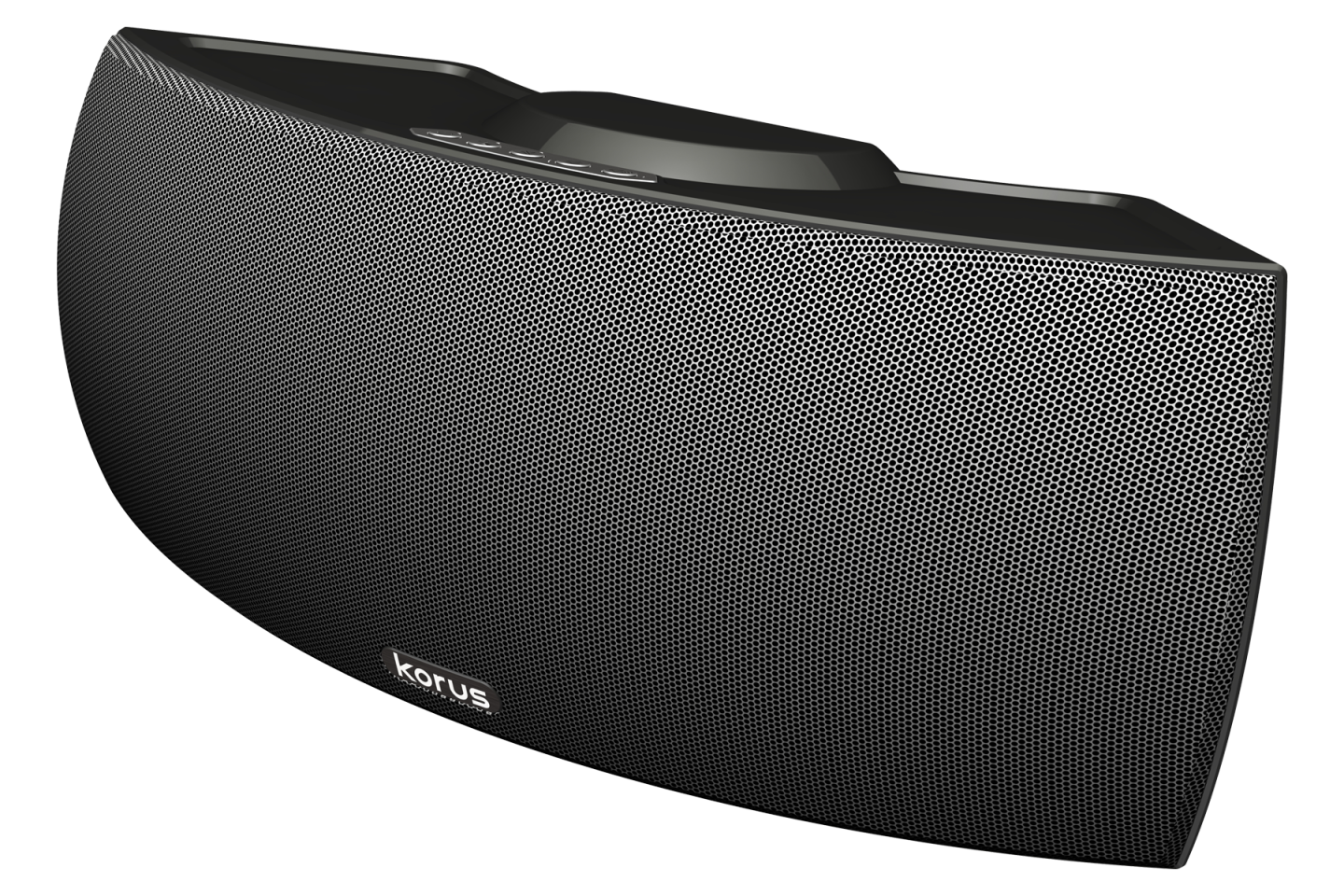Playing music without having to run a cable between speakers and smartphone, computer or media player has great appeal, but is not without issues. Bluetooth technology is well supported, but has limited range and pairing can sometimes be a real test of character. AirPlay or Wi-Fi give a little more freedom to wander, but you're tied to a router and all the finicky logins and security settings that go with that particular territory. The Korus wireless speakers from Core Brands use a wireless audio protocol called SKAA that promises increased range, easy setup, almost latency-free high fidelity playback.
The SKAA protocol was created especially for portable devices by Eleven Engineering, and uses the 2.4 GHz ISM radio band for transmissions at up to 480 Kbps. Despite operating in a heavily populated frequency band, users should not experience any clicks, pops or dropouts thanks to something called Walking Frequency Diversity, which detects conflicts and moves out of the way.

Users can also expect a wireless range of about 65 ft (20 m) indoors and over 200 ft (more than 60 m) outside, compared to the 33 ft (10 m) offered by Bluetooth. The Korus speakers allow simultaneous playback through up to four units, and a lag of just 40 milliseconds promises audio output that's in sync with whatever you're watching onscreen.
Since the SKAA standard is not as common as Bluetooth or Wi-Fi, users will need to plug a wireless transmitter called a baton into the USB, 30-pin or Lightning port of the audio source device (Android is not supported at the moment, but a compatible baton is expected to launch next year).
There's no troublesome pairing, or fiddly typing passwords on a smartphone's touchscreen keyboard. The first baton should be configured automatically and audio from the source device should start playing as soon as the speaker is switched and play is pressed on the baton-packing source device.
That said, manual configuration may be necessary on an older Windows or Mac computer, and if the source device uses a 30-pin baton, users will be prompted to download the Korus volume control app before playback can begin. Each speaker can remember up to 10 batons, which are added or removed from the saved list with the help of the Connect button on the top of the speaker.
Coming in two flavors at the moment, the Korus wireless speakers feature a proprietary acoustic signature called LiveStage, which is reported to bring vocals to the fore, and position instruments further back, to give music the depth needed for a full-bodied, dynamic, live performance-like listening experience.
The V600 packs a 100 W Class D amplifier with digital signal processing, which powers two 3.5-in high excursion mid-bass drivers, mounted in independently-sealed enclosures within the speaker cabinet, a 5.25-in woofer placed front and center, and two front-firing 1-in dome tweeters. The speaker also includes two 0.75-in rear imaging, side-firing dome tweeters to widen the soundstage. The overall frequency response is given as 80 Hz - 20 kHz.

The 17 x 9 x 7 in (44 x 23 x 18 cm), 11 lb (5 kg) unit can be powered from a wall outlet, but can accommodate six D-sized batteries for up to 90 hours of continuous playback and features an integrated carry handle for portability. A 3.5 mm audio input jack allows music to be fed directly into the speaker.
Like its bigger brother, the V400 has a curved front face for wider audio dispersion, and shares many of the same features. The 11 x 6 x 5.5 (28 x 16 x 14 cm), 4.4 lb (2 kg) speaker is AC power only, and has a 60 W Class D amp powering two 3.5-in mid-bass drivers and two 1-in dome tweeters. The reported frequency range is 125 Hz - 20 kHz.
Launched at New York's CE Week in June, and recently showcased at CES Unveiled in New York, the Korus speakers are now available to buy.
A V600 bundle, which includes a 30-pin baton, a Lightning baton, a USB baton and two charging cables, is currently available direct from KorusSound.com, or from Best Buy Magnolia Design Centers, for a special price of $449.99 (down from a recommended retail of $589.97). The V400 package normally lists at $489.97, but has also had its price tag cut by $140.
The video below runs through the main features and specifications.
Source: Korus

















